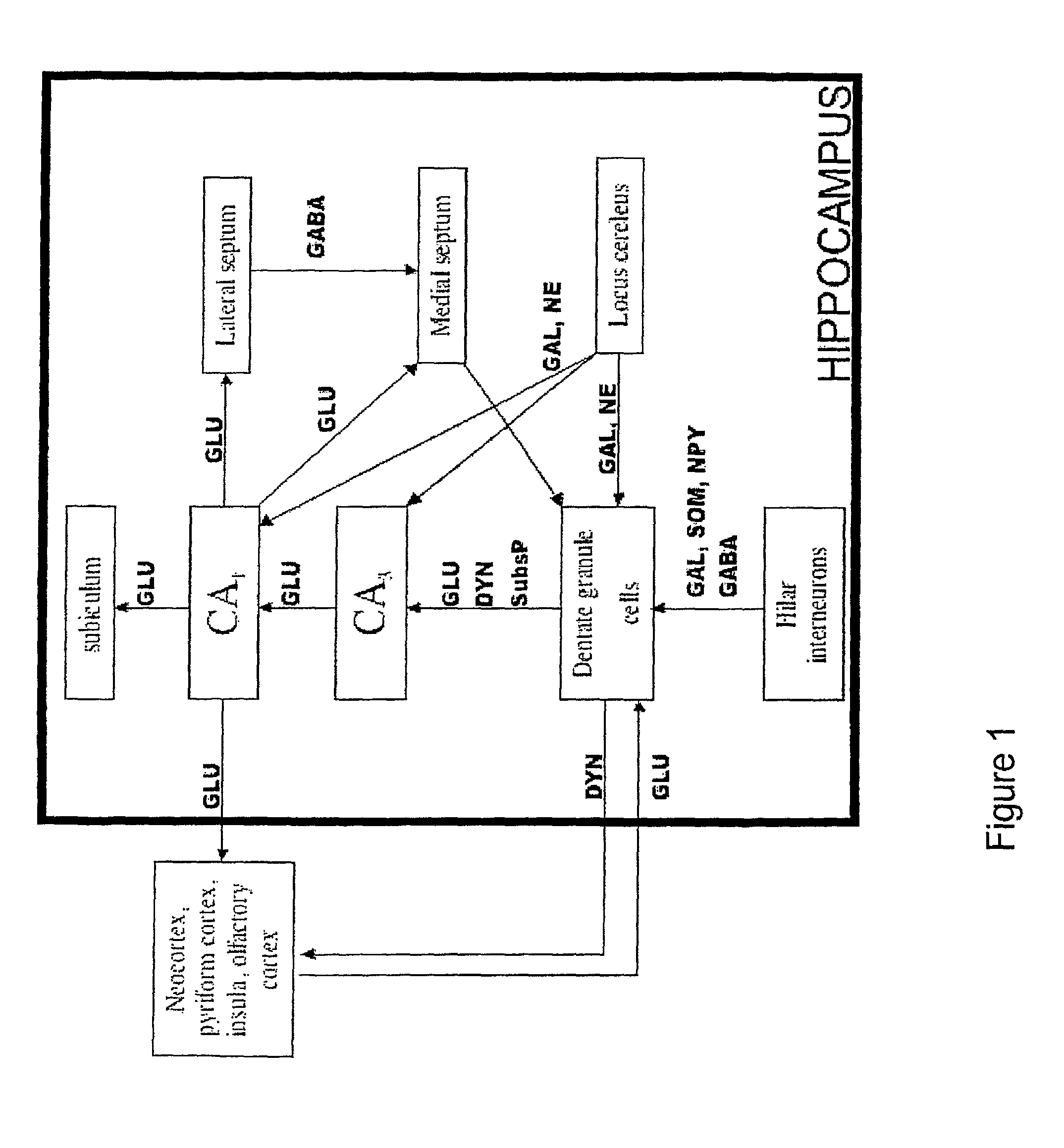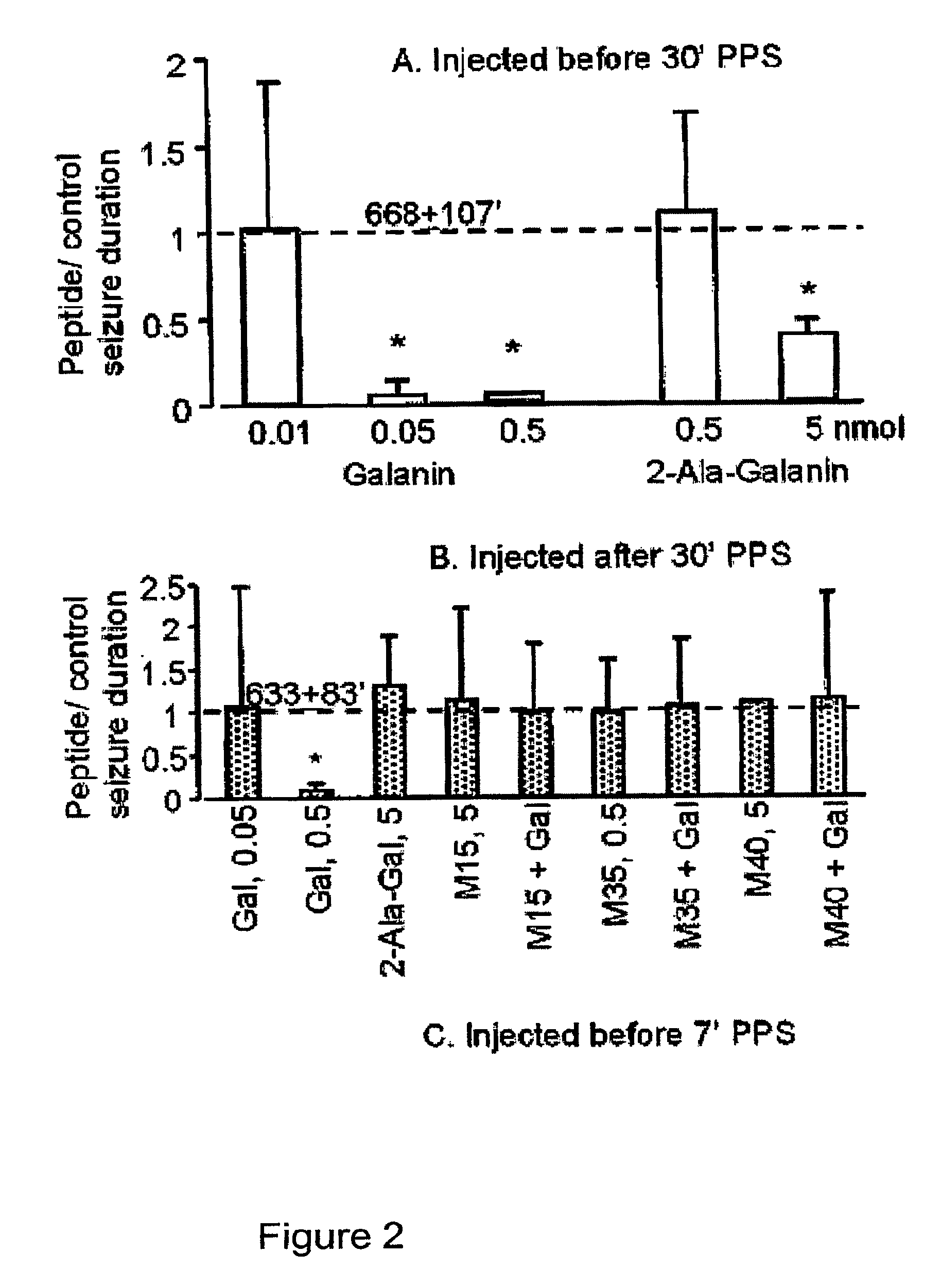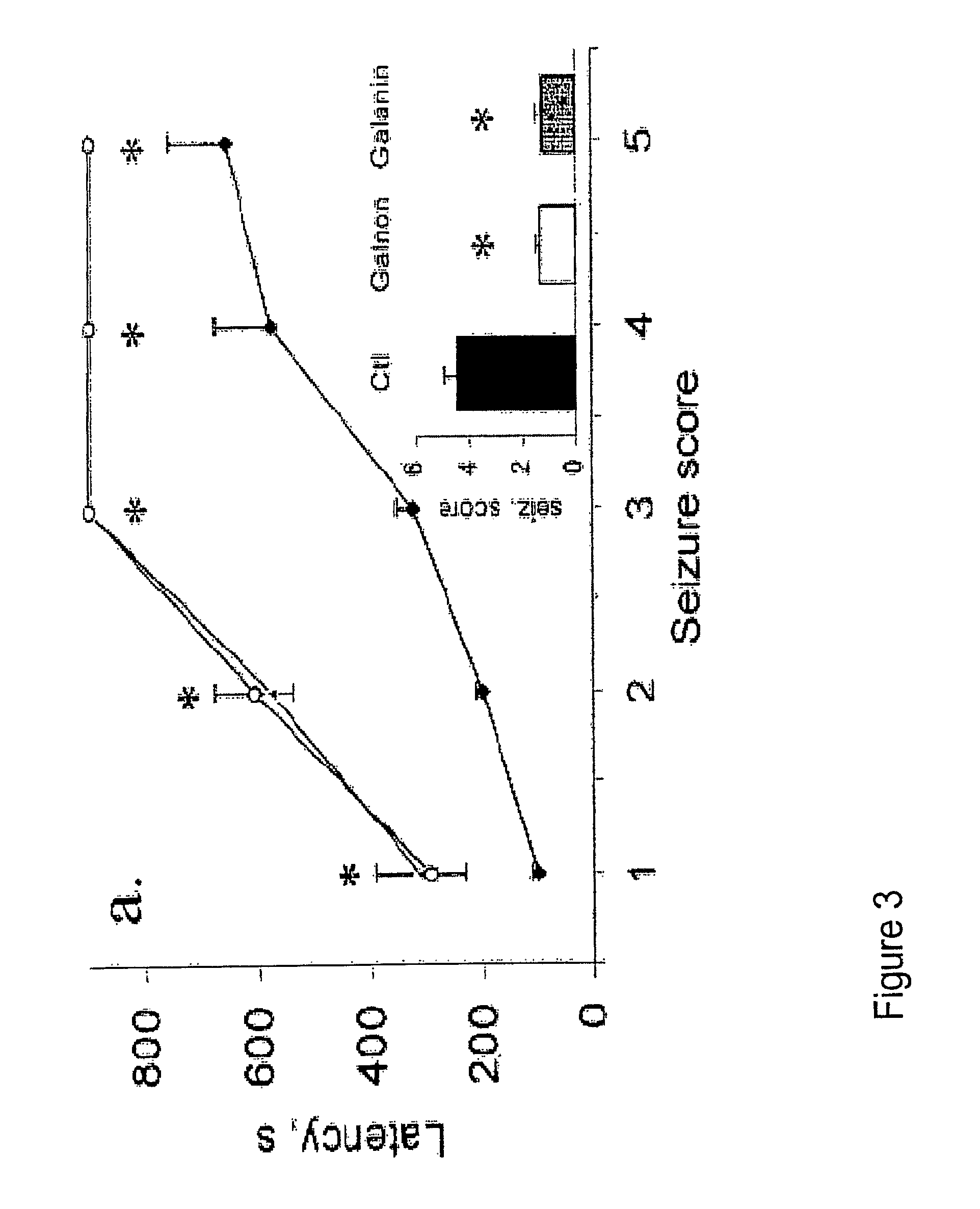Methods and compositions related to improving properties of pharmacological agents targeting nervous system
a technology of pharmacological agents and nervous system, applied in the field of improving the properties of pharmacological agents targeting nervous system, can solve the problems of poor bioavailability and marginal metabolic stability, preventing the development of neuropeptide-based antiepileptic drugs, and unable to apply peptide engineering techniques to neuropeptides with anticonvulsant activity, etc., to achieve the effect of increasing lipophilicity and basicity, glycosylation and basicity of the composition
- Summary
- Abstract
- Description
- Claims
- Application Information
AI Technical Summary
Benefits of technology
Problems solved by technology
Method used
Image
Examples
example 1
1. Example 1
Systemically-active Anticonvulsant Galanin Analog
[0273]To obtain proof-of-concept results that anticonvulsant neuropeptides can be engineered to enhance their penetration across the blood-brain barrier, two model neuropeptides were selected: somatostatin and galanin. As described previously, both of these neuropeptides possess anticonvulsant activity.
[0274]The general experimental strategy is illustrated in FIG. 7. A set of neuropeptide analogs (the 1st generation) are designed and synthesized to test their ability to bind with high affinity to their respective receptors. This set includes approximately ten analogs per neuropeptide. High-affinity analogs are further tested for their ability to penetrate the blood-brain barrier. Results from 1st-generation analogs are followed by the synthesis and evaluation of 2nd- and, subsequently, 3rd-generation analogs. The most promising analogs are selected (high-affinity ligands with enhanced permeability through the blood-brain b...
example 2
2. Example 2
Anticonvulsant Galanin Analogs
[0312]Galanin is a 30-amino-acid neuropeptide, with the N-terminal portion being a highly potent agonist as compared to the whole length peptide (Langel and Bartfai, 1998). A truncated galanin (1-16) analog (below) was used to introduce modifications that enhance its permeability through the blood-brain-barrier
[0313]
(SEQ ID NO: 1) 1 2 3 4 5 6 7 8 9 10 11 12Gly Trp Thr Leu Asn Ser Ala Gly Tyr Leu Leu Gly13 14 15 16Pro His Ala Val.
[0314]The following residues critical for biological activity were identified: Gly1, Trp2, Asn5, Tyr9 and Gly12 (Land et al., 1991). The N-terminal extensions or truncations caused a loss of the biological activity. On the other hand, the C-terminal portion of galanin (1-16) is very robust when it comes to either truncations or attaching larger structures (Pooga et al., 1998).
[0315]Based on available structure-activity relationship data, two peptide-based galanin analogs were designed, chemicall...
example 3
3. Example 3
GAL-BBB2 Possesses Potent Pain Relief
[0345]a) Formalin Test
[0346]An injection of 0.5% formalin is made into the planter region of a mouse right hind paw. This elicits a distinct biphasic behavioral profile characterized by the mouse licking the affected paw. Immediately following the injection the mouse licks the paw for about 10 minutes. This is phase 1 (acute) and is followed by a brief latent period where there is little behavioral activity. A more prolonged period of about 20 to 30 minutes of paw licking ensues which constitutes phase 2 (inflammatory).
[0347]Prior to the administration of the active peptide, drug or vehicle each mouse undergoes a 15-minute conditioning period in one of several 6″ tall plexiglass observation tubes (4″ diameter) that are placed in front of a mirror. Following the conditioning period, mice were treated i.p. with either GAL-BBB2, the inactive native fragment Gal 1-16, or gabapentin then returned to its home tube. One hour after treatment,...
PUM
 Login to View More
Login to View More Abstract
Description
Claims
Application Information
 Login to View More
Login to View More - R&D
- Intellectual Property
- Life Sciences
- Materials
- Tech Scout
- Unparalleled Data Quality
- Higher Quality Content
- 60% Fewer Hallucinations
Browse by: Latest US Patents, China's latest patents, Technical Efficacy Thesaurus, Application Domain, Technology Topic, Popular Technical Reports.
© 2025 PatSnap. All rights reserved.Legal|Privacy policy|Modern Slavery Act Transparency Statement|Sitemap|About US| Contact US: help@patsnap.com



